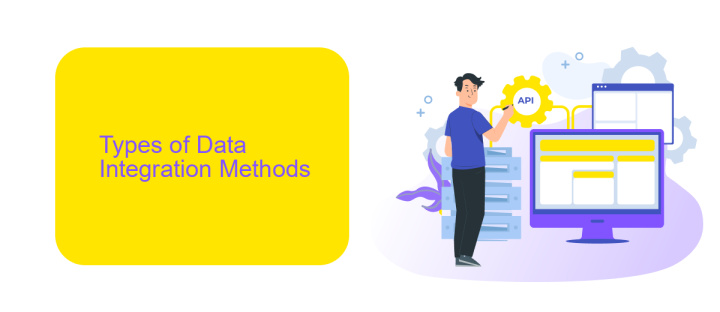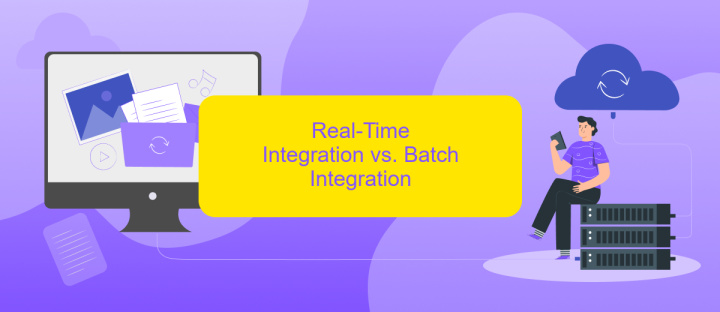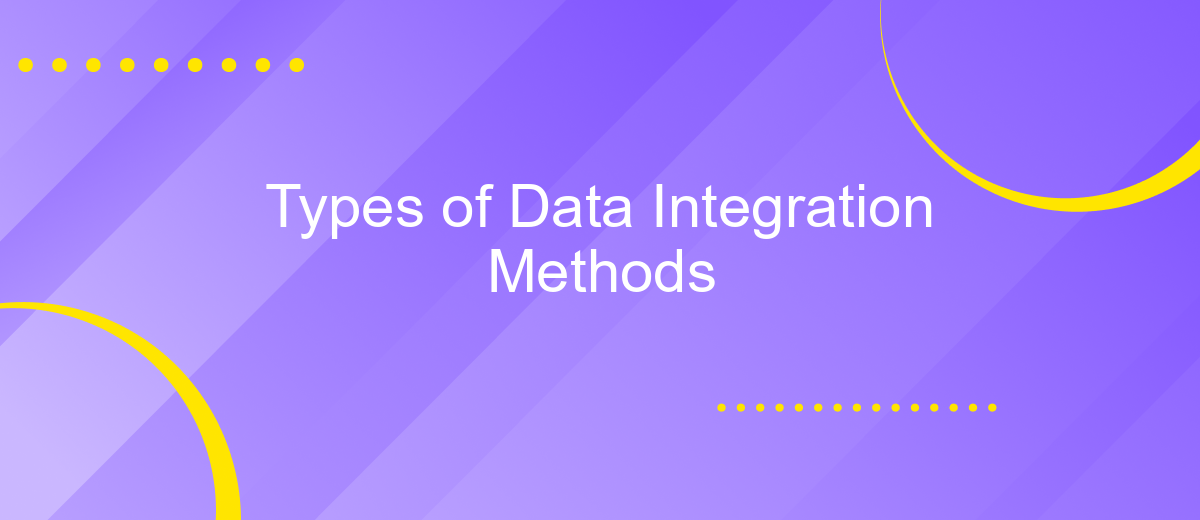Types of Data Integration Methods
Data integration is a crucial process in today's data-driven world, enabling organizations to combine data from various sources into a unified view. This article explores different types of data integration methods, examining their unique features, advantages, and applications. Understanding these methods can help businesses make informed decisions about which approach best suits their specific needs and goals.
Introduction
Data integration is a critical process for businesses aiming to consolidate information from various sources into a unified view. This process not only enhances data accessibility but also supports better decision-making and operational efficiency. Understanding the different methods of data integration is essential for selecting the most appropriate approach for your organization's needs.
- Manual Data Integration
- Middleware Data Integration
- Application-Based Integration
- Uniform Access Integration
- Common Storage Integration
Each method has its own set of advantages and challenges, making it crucial to evaluate them based on your specific requirements. Tools like ApiX-Drive can simplify the integration process by providing a user-friendly platform for connecting various applications and automating data workflows. By leveraging such tools, businesses can achieve seamless data integration without extensive technical expertise.
Types of Data Integration Methods

Data integration methods are essential for combining data from different sources into a unified view. One common approach is ETL (Extract, Transform, Load), which involves extracting data from various sources, transforming it into a suitable format, and loading it into a target system. This method is particularly useful for data warehousing and analytics. Another popular method is data virtualization, which allows users to access and manipulate data from multiple sources without the need for physical data movement. This approach provides real-time access to data and reduces the complexity of data management.
For businesses looking to automate and streamline their data integration processes, tools like ApiX-Drive can be highly beneficial. ApiX-Drive offers a user-friendly platform that enables seamless integration between various applications and services without requiring extensive coding knowledge. By using such tools, organizations can save time and resources while ensuring data consistency and accuracy across different systems. Additionally, ApiX-Drive supports a wide range of integrations, making it a versatile solution for businesses of all sizes.
Real-Time Integration vs. Batch Integration

Real-time integration and batch integration are two distinct methods for synchronizing data across systems. Real-time integration involves continuous data processing, ensuring that information is updated instantaneously across platforms. This method is ideal for scenarios where immediate data accuracy is crucial, such as financial transactions or live inventory tracking.
- Real-Time Integration: Processes data instantly, providing up-to-date information.
- Batch Integration: Collects data over a period and processes it at scheduled intervals.
Batch integration, on the other hand, aggregates data and processes it at specific intervals, such as hourly or nightly. This approach is suitable for non-time-sensitive operations like data warehousing and reporting. Tools like ApiX-Drive facilitate both real-time and batch integrations, offering customizable workflows to meet diverse business needs. Choosing the right method depends on the specific requirements of your operations and the criticality of data timeliness.
On-Premises Integration vs. Cloud Integration

On-premises integration involves connecting various data sources and applications within a company's local network. This method offers greater control over data security and compliance, as all data remains on-site. However, it often requires significant investment in hardware and IT resources, making it a costly option for many businesses.
Cloud integration, on the other hand, leverages the power of cloud services to connect disparate systems and data sources. This approach provides scalability, flexibility, and cost-efficiency, as it eliminates the need for extensive on-site infrastructure. Cloud integration can be rapidly deployed and easily managed through various platforms.
- Scalability: Cloud solutions can grow with your business needs.
- Cost-Efficiency: Reduced need for physical hardware and maintenance.
- Accessibility: Access data and applications from anywhere with an internet connection.
- Security: Advanced security measures provided by cloud service providers.
For businesses looking to streamline their data integration processes, services like ApiX-Drive offer robust solutions. ApiX-Drive simplifies the integration of various applications and data sources, whether on-premises or in the cloud, allowing businesses to automate workflows and enhance productivity without the need for extensive technical expertise.
Unified Data Integration vs. Best-of-Breed Integration
Unified data integration aims to consolidate all data sources into a single, cohesive system. This approach simplifies data management, reduces redundancy, and ensures consistency across the organization. By centralizing data, businesses can streamline their operations and make more informed decisions. However, this method can be complex to implement and may require significant upfront investment in technology and resources.
On the other hand, best-of-breed integration allows organizations to choose specialized tools for specific tasks, ensuring that each component is optimized for its purpose. This method offers flexibility and the ability to adopt cutting-edge technologies as they emerge. For example, services like ApiX-Drive enable seamless integration between various applications, making it easier to automate workflows and enhance productivity. While best-of-breed integration can be more adaptable, it may also lead to challenges in maintaining interoperability and data consistency across different systems.
FAQ
What are the different types of data integration methods?
What is ETL and how does it work?
How does data virtualization differ from traditional data integration methods?
Can data integration be automated?
What are the benefits of using automated data integration tools?
Apix-Drive is a universal tool that will quickly streamline any workflow, freeing you from routine and possible financial losses. Try ApiX-Drive in action and see how useful it is for you personally. In the meantime, when you are setting up connections between systems, think about where you are investing your free time, because now you will have much more of it.

